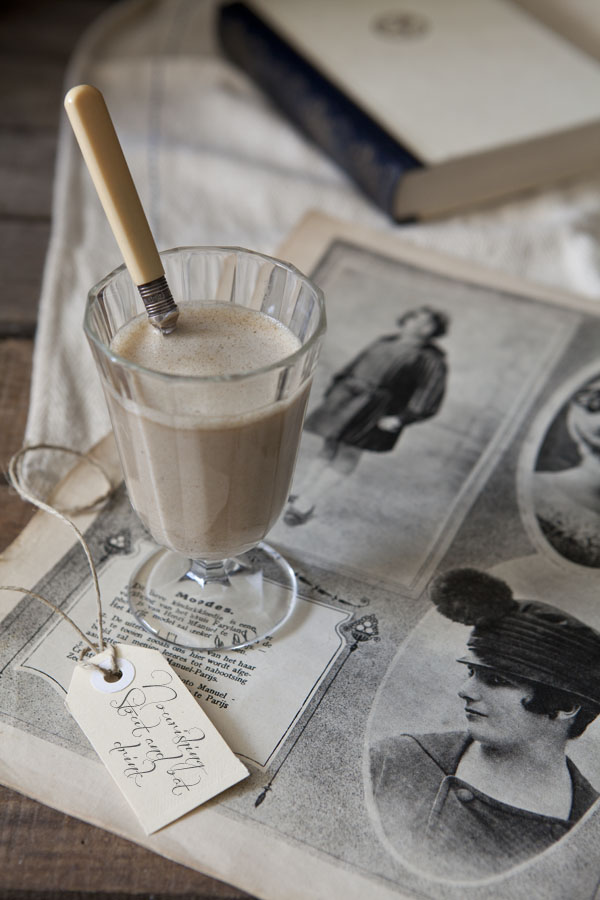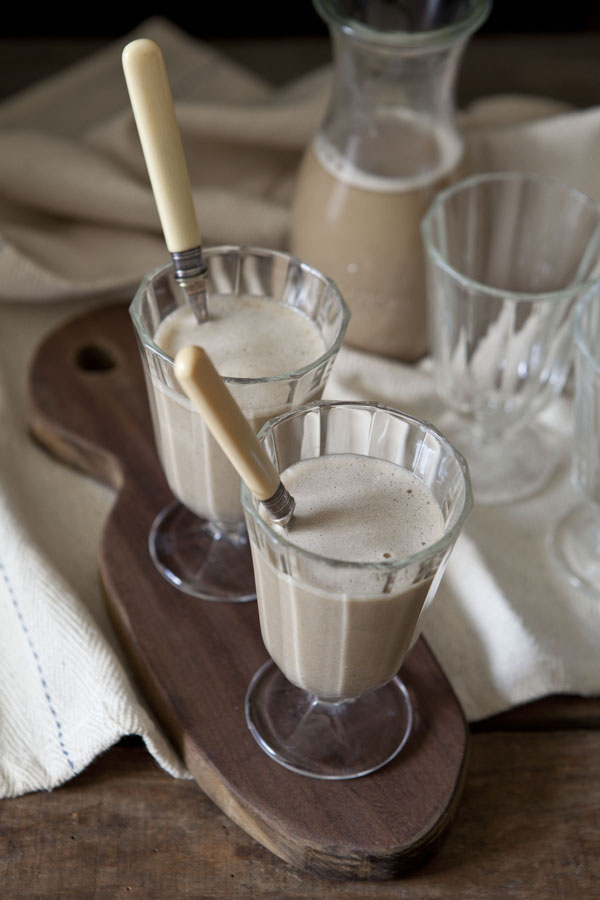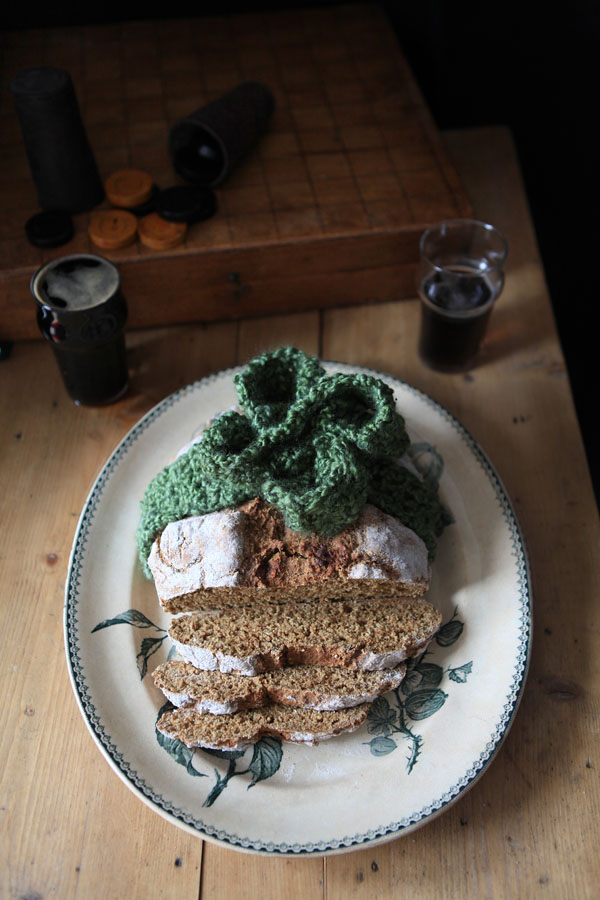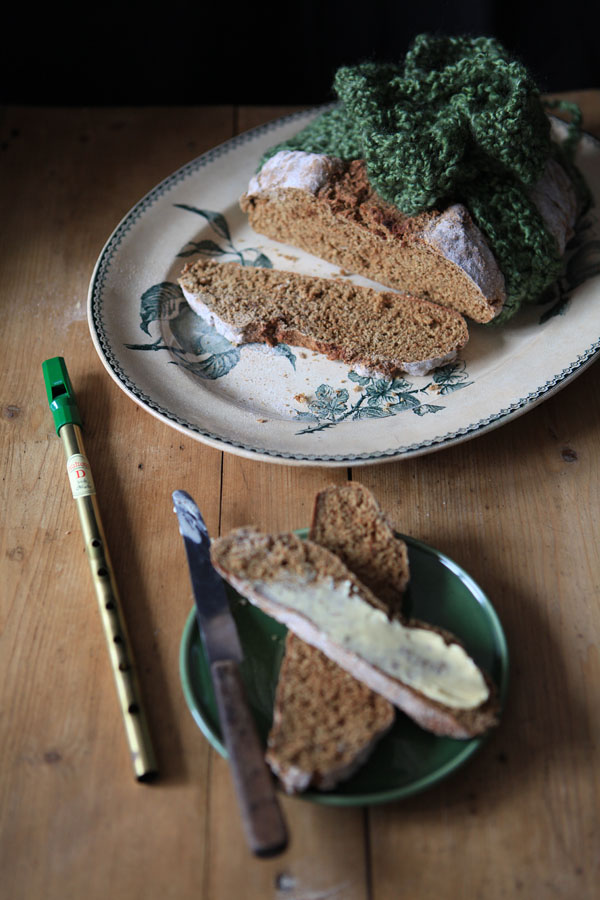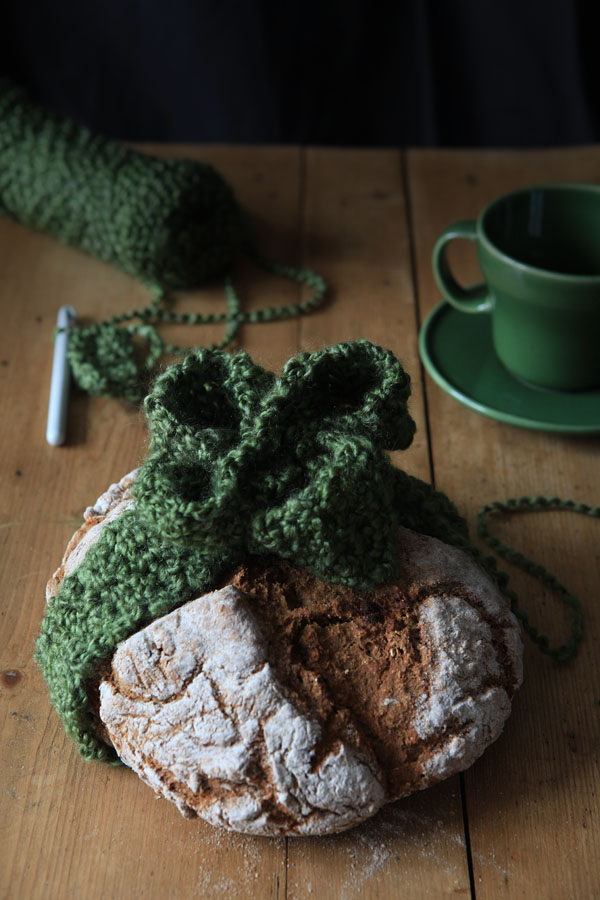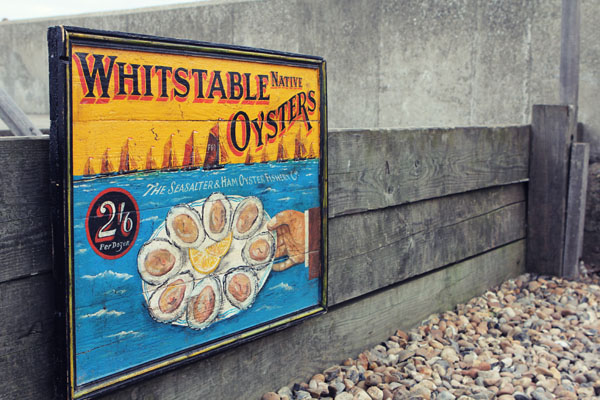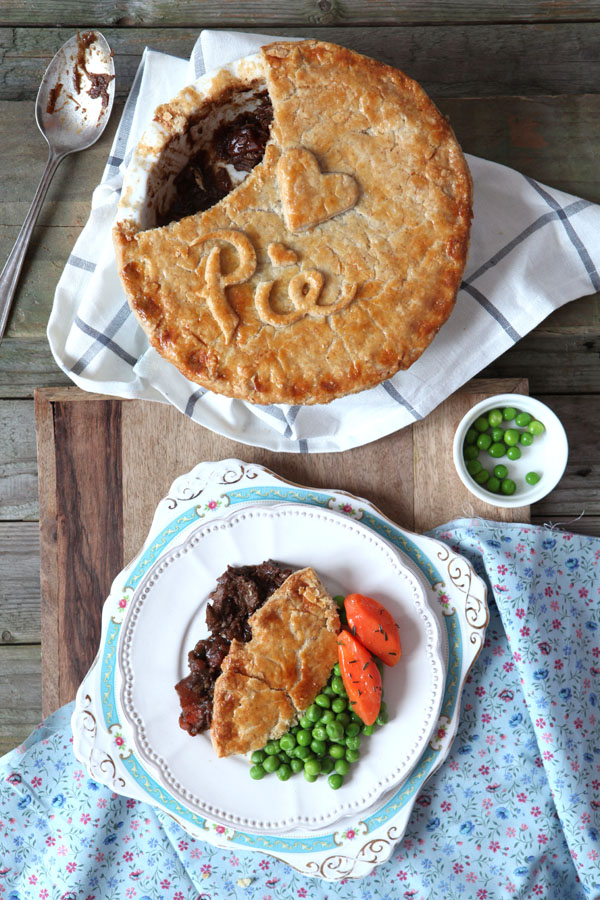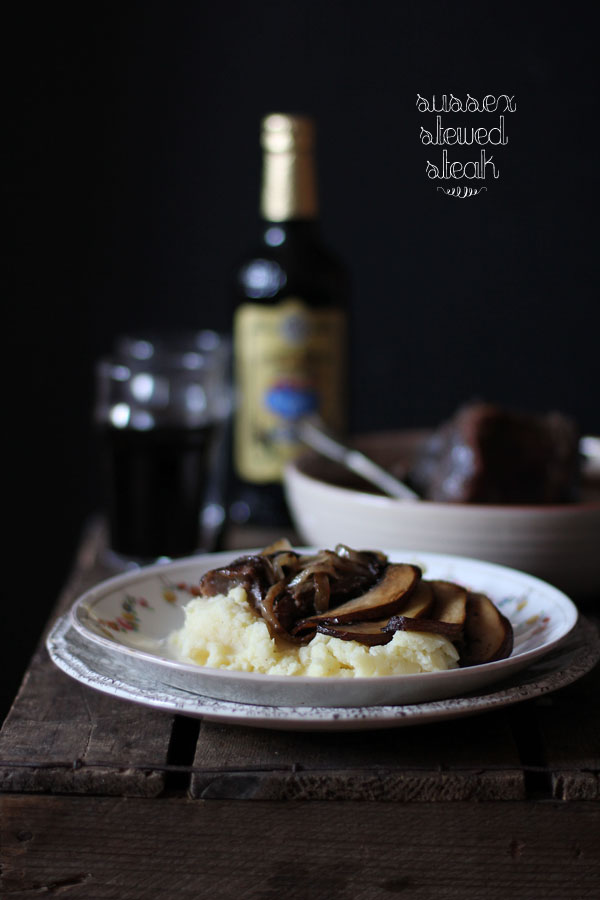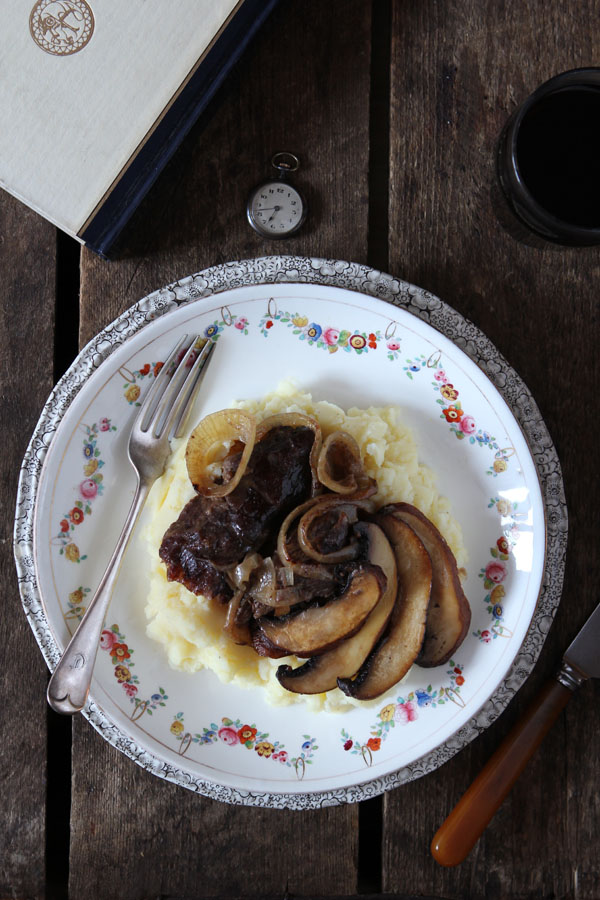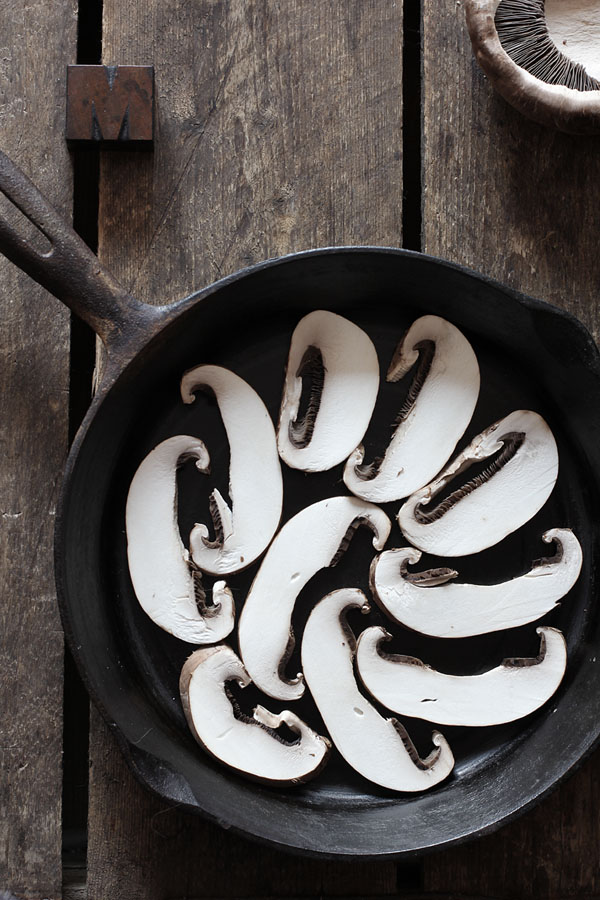My mother always told me she and my grandmother loved drinking a Trappist beer when they were breastfeeding, she said that it was nurturing for new moms and that in the old days the nurses would actually bring a beer to the mothers to stimulate the lactation process.
But it isn’t just a myth, if a nursing mother drinks a good old pint of beer, the yeast and hops in it will help increase her milk supply. Hops are also calming, so good for the new mom. Brewers yeast is also taken as a supplement to boost the milk supply by mothers who do not enjoy the taste of a lovely beer.
Trappist is a Belgian beer but I think Stout is the prefect beer for this recipe as I’ve heard stories about mothers receiving a Stout when they have given birth, a Nourishing Stout would have been better but sadly those haven’t been brewed commercially for decades. Milk Stout is called that way because it used to contain lactose, a sugar derived from milk. Lactose doesn’t only add sweetness to the beer, it also adds calories which is why together with the yeast and hops in the beer it was given to lactating mothers. Although Milk and Nourishing Stouts only became popular after the First World War, the usage of lactose and the mentioning or illustrating of it on the beer labels was forbidden after the Second World War due to rationing.
The only surviving Milk Stout is Mackeson’s, I came across it by accident when I was at Tesco’s a few months ago, the can still shows a milk churn that has been Mackeson’s trademark since it was first brewed in 1907 at the Mackeson’s brewery in Hythe, Kent. Mackeson’s is now brewed by InBev so I doubt that there is still any lactose in the beer today.
As I am creating this concoction for my friend and fellow blogger Zita who gave birth to a healthy little boy a few hours ago, I am going to make it as nutritious as I
can.
Now luckily I know Zita does like an occasional beer so I’m not
bringing her anything she wouldn’t like to drink. I am including a way to remove the alcohol from the beer in the recipe, so it is ‘safe’ to drink for those who are worried about getting their newborn drunk. This drink isn’t
solely for nursing mothers, it is also for the dad, the friend, the guy
in the street and the health food lover. It is packed with nutrition.
To go with the Stout I’m making my own Oat milk.
Oats have a low glycemic index, which can help to regulate blood sugar
levels and make you feel fuller for longer. They also contain lots of vitamins,
minerals and antioxidants, are a good source of protein and complex carbohydrates.
You can use 3 types of oats for this recipe, the groats which are the oat kernels with the hulls removed, rolled
oats which are steamed groats that have been rolled out and flattened and steel
cut oats which are the oat groats chopped up. Steel cut oats are therefore the
best choice as they contain more of their original nutrients but they are not as easy to find as rolled oats.
To break down the phytic acid content which makes the oats more digestible and reduce anti-nutrients so your body can soak up a lot more of the nutrients, I soaked the oats with cider vinegar. You can also use live yoghurt as lactic acid fermentation.
This drink is for all those who love Stout, if you don’t care for Stout I don’t recommend you try this drink as it is quite bitter. The bitter Stout works perfectly with the sweet oats, and even has notes of a coffee with lots of milk.
Before you skip to my recipe, have a look at our feast for Zita!
Maybe you remember the Virtual baby shower we did last summer, today were are back with a whole new table of food, follow the links to the blogs to read the other ladies recipes:
Our Menu
Giulia: Scarpaccia
Regula: Nourishing Stout & Oat Drink
Beth: Moghrabieh Salad with Preserved Lemon and Coriander Pesto
Jasmine: Whole Wheat Flour Cocoa Cookies
Artemis: Kasopita – Cheese Pie from Εpirus
Sarka: Kiwi Carpaccio with Pecans and Manuka Honey
Emiko: Ricotta and Dark Chocolate Cake
Sneige: Pomegranate Curd with Seedy Pine Nut Crust
Simone: Pistache Raspberry Cakes
Karin: Fresh Pea Souffle with Goat Cheese
Nourishing Stout and oat drink
What do you need
Start the evening before, or in the morning.
To prepare the oats:
- Steel cut or Rolled oats, 1 cup (you can use the groats if you can find them)
- apple cider vinegar (or live yoghurt), 1 teaspoon
- water, 2 cups
For the drink:
- water, 2 cups
- 1 date, stoned (2 if you like it sweeter) and cut finely
- Stout or Guinness, 1 cup
- a fine sieve
- a blender or food processor
Method
- Combine the oats, cider vinegar (or yoghurt) and water in a bowl, cover loosely and leave to soak for at least 8 hours.
8 hours later …
- Drain your oats by straining them through a fine sieve, discard the soaking water
- Rinse the oats gently to remove the starch
- Put the oats and the date into the food processor (I used my Vitamix) and blend
To make this drink with alcohol free stout:
- add one cup of stout to a small saucepan and bring to the boil, simmer for 5 minutes then let it cool. (the drink will taste less bitter with this method)
- Add two cups of water and one cup of stout and blend again until creamy
- At this point you can strain your oat milk through a fine sieve again to remove any of the oats, I choose not to, to keep the drink smooth and a little thicker. Discarding the oats is trowing away nutritious food.
- If you want to strain, you can keep the leftover oats to make cake or pancakes.
Leave the drink to rest for 30 minutes – 1 hour before use
Enjoy!
You might also like
Strawberry and Pimm’s Granita
Drunken cherries
Cobnut Brandy
Sloe Gin



